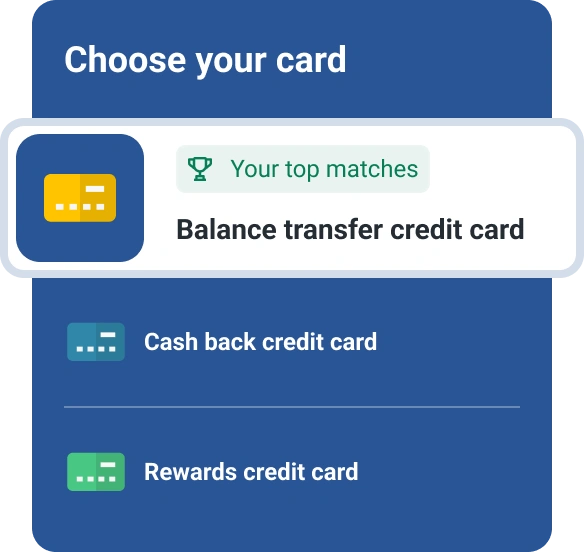Why Was My Balance Transfer Request Denied?
Quick Answer
Your request for a balance transfer might be declined if the transfer amount is above your credit limit, your account is in poor standing or you’re trying to transfer a balance to a card from the same credit card issuer.

A balance transfer credit card offering an introductory 0% annual percentage rate (APR) period can be a useful tool for tackling high-interest debt. By using a balance transfer card to pay off a high-interest credit card or other debt, you could pay down debt faster while saving on interest.
Your balance transfer request can be denied, however, if you have an insufficient credit limit, your account is in poor standing or you've made a lot of recent balance transfers. Find out why your balance transfer may be denied and what you can do about it.
Reasons Why Your Balance Transfer Request Could Be Denied
Here are some reasons your balance transfer request might be denied.
1. You Try to Transfer a Balance From the Same Issuer
Generally, you can't transfer a balance between credit cards from the same issuer (for example, from one Chase card to another). Before requesting a balance transfer, check the card you want to transfer a balance from and be sure to apply for cards from a different issuer.
Determining who issues a credit card can be tricky, especially with co-branded credit cards. Many rewards credit cards are co-branded in partnership between a brand (such as a retailer, airline or hotel) and a credit card issuer.
Major credit card issuers include Bank of America, Capital One, Chase, Citi, U.S. Bank and Wells Fargo. American Express and Discover are both credit card issuers and credit card networks. You can check a card's issuer by going online to apply for the card or reading its terms and conditions.
2. Your Credit Limit Is Too Low
Your balance transfer request can be rejected if the amount you want to transfer is above your credit limit or limits set by the card issuer. When deciding how much to transfer, remember to account for balance transfer fees that will be added to your balance. For example, if a card has a $5,000 credit limit and a 5% balance transfer fee, a request to transfer $5,000 would be denied because the $250 balance transfer fee would push the total to $5,250—above your credit limit.
One challenge: You won't find out what your credit limit is until you're approved for a balance transfer card. In addition, some credit card issuers cap balance transfer amounts regardless of your credit limit. Your credit score is also a factor; card issuers may set a lower balance transfer limit if your credit is poor.
3. Your Account Is in Poor Standing
It's possible to request a balance transfer to an existing credit card, but your request may be denied if your account isn't in good standing. Each card issuer may have its own criteria for "good standing." For example, one credit card issuer might deem your account in good standing only if you've never had a late payment. Another might consider your account in good standing if any previous delinquent payments have been brought current.
Checking your credit report before you apply for a balance transfer can reveal any negative information, such as late payments, that could affect your application's approval. You have the right to dispute late payments you believe are inaccurate and take steps to improve your credit score, such as bringing late accounts current and making future payments on time.
4. You Have Too Many Recent Balance Transfers
Assuming you pay off your transferred balance before the promotional period ends, a balance transfer card can save you significant interest. But if you tend to overspend, getting a balance transfer may simply reinforce bad habits. You may be tempted to put new purchases on the old credit card (with its zero balance) or use the balance transfer card for purchases while simultaneously trying to pay it off. If your credit card balances snowball, you could end up in a vicious cycle, moving debt from one card to another without significantly reducing it.
Credit card issuers, aware of this risk, may view multiple recent balance transfers as a sign that you're struggling with debt. Concerned that you're juggling multiple credit cards or loans to stay afloat, they may deny your balance transfer request.
What to Do When Your Balance Transfer Request Is Denied
Don't get discouraged if your balance transfer is denied; instead, take steps to boost your odds of approval next time.
- Improve your credit score. Paying bills on time and bringing late accounts current can help increase your credit score, which could make it easier to get a balance transfer.
- Tackle debt. A high debt-to-income ratio or credit utilization ratio could impact your ability to make a balance transfer. Avoid using your credit cards and work on paying down revolving debt before requesting a balance transfer again.
- Be patient. Applications for new balance transfer cards generate hard inquiries that can temporarily ding your credit. Wait until you see improvement in your credit score and have made a dent in your debt to apply for a balance transfer again.
Alternatives to a Balance Transfer
A balance transfer isn't the only way to pay down debt. Consider these options:
- Get a debt consolidation loan. Although you won't find one with a 0% APR, these personal loans typically have lower interest rates than credit cards. A fixed-interest loan with predictable monthly payments could make repaying debt feel more manageable too.
- Request a lower interest rate. Your existing credit card company might agree to reduce your interest rate if you're a long-time customer with a track record of on-time payments.
- Borrow from family. A loved one may be willing to lend you money at low or no interest. Protect your relationship by drawing up a contract and committing to repaying the loan.
- Try the debt snowball or debt avalanche method. The debt snowball method focuses on paying off your smallest debts first, then moving on to larger debts. The debt avalanche approach concentrates on the highest-interest debt first, then tackles lower-interest debts.
- Get credit counseling. Reputable credit counseling agencies can help you develop a budget and plan to repay debt. They can also set you up with a debt management plan to consolidate your debt and reduce monthly payments.
Get the Balance Right
Being denied a balance transfer doesn't have to derail your debt payoff goals. Patience and diligence can improve your credit score and help you get a balance transfer next time you apply. Consider signing up for Experian Boost®ø, a free feature that gives you credit for on-time payments for your cellphone, utilities and select streaming services, and may help increase your FICO® ScoreΘ quickly.
Best balance transfer cards
Need to consolidate debt and save on interest? See if you qualify for intro offers like 0% intro APR up to 21 months based on your FICO® Score.
See your offersAbout the author
Karen Axelton specializes in writing about business and entrepreneurship. She has created content for companies including American Express, Bank of America, MetLife, Amazon, Cox Media, Intel, Intuit, Microsoft and Xerox.
Read more from Karen

